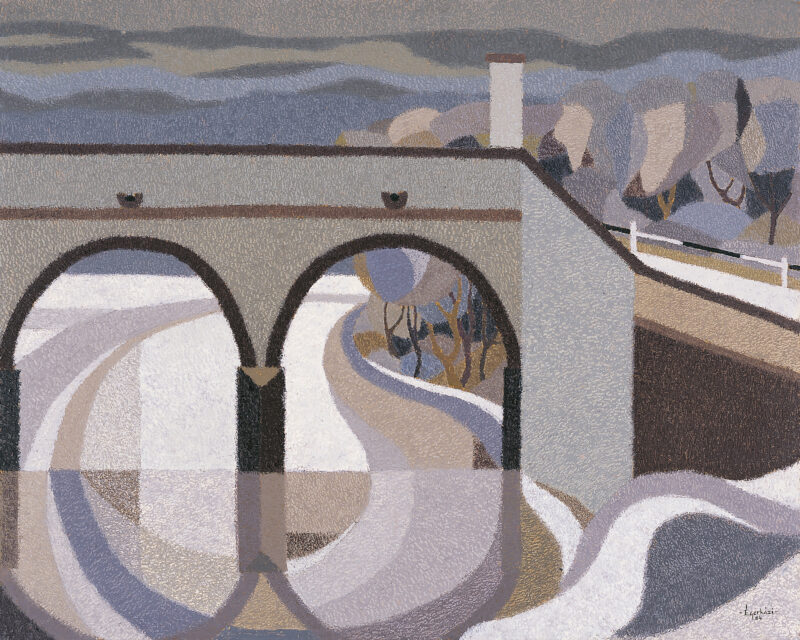Hortobágy at winter
oil, board, 80×100 cm
1984
Hortobágy at winter
One of the most important themes of Imre Égerházi’s painting was the Great Hungarian Plain, specifically Hortobágy. He made hundreds of excellent paintings on Hortobágy and many of them bear the word Hortobágy in their titles. From 1982, he reorganized the Hortobágy artists’ colony, which operated in the 1920s, under the name Hortobágy Creative Camp. Under his leadership, the camp, which invites painters, graphic artists and photographers, has grown into an internationally recognized colony of artists. Unusually, the creative camp welcomed the artists not in the summer, but in two-week shifts between February 15 and March 15. Of course, in addition to the organizational tasks, Imre Égerházi also had the opportunity to make more and more beautiful works about the plain. The unique nine-hole bridge in Hortobágy is virtually the single architectural landmark in the landscape and therefore the artists working here paint it regularly.
This painting, born in 1984, also shows the ramp of the nine-hole bridge and the water of the Hortobágy River reflected under its arches. The pictorial world of artwork is dominated by blue, gray and brown colors typical of Imre Égerházi in the 80s.
In terms of the compositional values of the painting, it is one of the outstanding works of the artist’s life work. Imre Égerházi also knew the significance of this, so it was no accident that he chose it for the collection of 100 paintings he donated to Hajdúhadház.
On Hungarian Jazz/World fusion band Djabe’s album Sheafs Are Dancing, composed based on the atmosphere of Imre Égerházi, both the painting and a piece of similar title can be found.
The painting can be seen in the Imre Égerházi Memorial House, owned by Hajdúhadház.


